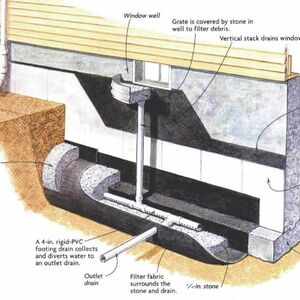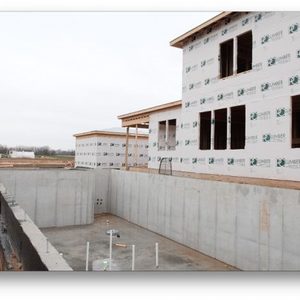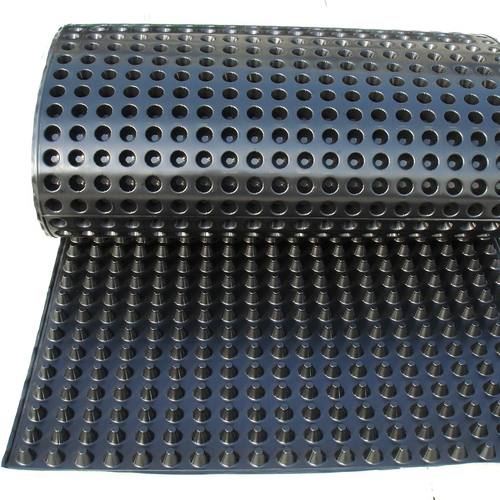
When it comes to pouring and detailing a foundation slab, you have one shot to get it right—at least without the major expense and headache of a retrofit. Correctly detailing the control layers for water, airtightness, vapor, and thermal management is integral to the assembly’s successful performance. This is our approach to constructing a basement that will stay dry and in a healthy condition.
Water management always comes first
Under-slab water management requires what we call an exclusion tactic—meaning preventing water from collecting right from the get-go. It is achieved with a perforated perimeter drainpipe. In this detail, the pipe is installed to the interior of the footing. It is not uncommon to put it to the exterior of the footing or to have one in both locations. What determines this is the level of risk given the local water table. The higher the water table, the higher the risk, and therefore it is advisable to have more than one path directing water away from the foundation.
If using just one drainpipe, whether you put it to the interior or exterior of the footings doesn’t matter, so long as the pipe is installed below the bottom of the slab. Also note that a perforated drain is typically set in a bed of stone to encourage water to move laterally, making its way into the drainpipe that will divert it away from the slab. The stone bed also acts as a capillary break. If the stone and perimeter drain are installed properly, the bottom of the slab should not see water in its lifetime.
Lastly, there are two places water can exit the pipe. If the site is sloped enough, the pipe will drain to daylight down grade. If the site is closer to level, the drain…
Weekly Newsletter
Get building science and energy efficiency advice, plus special offers, in your inbox.

This article is only available to GBA Prime Members
Sign up for a free trial and get instant access to this article as well as GBA’s complete library of premium articles and construction details.
Start Free TrialAlready a member? Log in















4 Comments
"If using just one drainpipe, whether you put it to the interior or exterior of the footings doesn’t matter"
I don't think this is true. Locating the pipe on the exterior (which is required by our code) helps relieve hydrostatic pressure against the footing and foundation wall, especially on sloped sites. With no exterior drain, water can build up on the outside of the walls above the level of the slab, and the presence of an interior drain doesn't prevent this. Interior drains have their own uses, and in some situations are desirable, but not as a substitute for an exterior one.
What is the reason for the upturn of the poly needing to be 18”? And what tape would you use to tape poly to concrete?
Thanks in advance!
Is Thermax specified for the walls because it is foil faced and acts as a vapor retarder? Or can any faced rigid insulation (XPS, EPS, GPS) be used?
"Of course, there are other methods for controlling the elements that plague a foundation assembly, but this detail has proven successful for us. Builders accept it, it’s budget friendly, and it performs well over time." Specifically this is used and suitable in CZ 5 where your firm is located?
Have a similar question. Would drying towards the interior be useful here? So using unfaced EPS vs the faced Polyiso? I thought blocking drying was a bad thing in the basement?
Or is the idea here to create a bathtub with the polyiso and taped poly making the bathtub?
Log in or become a member to post a comment.
Sign up Log in